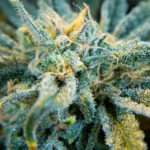There are many ways to make your skin look healthy and vibrant. This article offers insight into one of the most common causes of dry skin, which is a lack of moisture in the body. With these tips, you can enjoy healthier, more youthful skin.
It can be hard to tell when your skin is starting to get dry. But there are a few signs that you might want to start using hydrating products more often. Here are five of the several dry skin sign and symptoms (โรค ผื่น ผิว แห้ง, term in Thai), along with tips on how to treat them:
- It feels tight and uncomfortable when you touch it. This is probably because the surface layer of skin is less elastic than usual, making it difficult for sweat and other fluids to evaporate and leave your skin feeling oily and soft.
- Your pores become smaller, which makes your skin look duller since oil cannot easily reach the surface to protect against bacteria or infection.
- You see patches of flaky, dried-out skin that don’t heal quickly even after applying topical treatments like lotions or creams.
- Your complexion becomes drier over time – this may manifest itself as an uneven tone due to depletion of oils in specific areas (such as around the nose), or general fatigue from working harder for an extended period without any relief (due to increased sensitivity).
- Finally, if you have really dry skin, you may experience excessive itching and irritation.
The five main Causes of Dry Skin
Dry skin is of the most common skin conditions. It can occur at any age, but is most common in the elderly. Dry skin can be caused by a number of factors, including environmental exposure, genetics, and lifestyle choices. Dry skin can cause inflammation and irritation. This can lead to problems with the skin’s function, including its ability to protect against infection and cancer.
If you have dry skin, it’s important to take your health seriously. Irritates with a doctor if you experience any unusual signs or symptoms associated with your dry skin condition. This is especially true if your skin becomes more dry and scaly or if it becomes red, painful, or inflamed.
There are several signs and symptoms of dry skin. These include:
-Redness and irritation, especially around the nose, cheeks, and chin
-Itching
-Bumps or lumps on the skin that are hard to pop
-A thin layer of dry skin that easily breaks into pieces
-Sensitivity to the sun and wind
There are several treatments for dry skin. These include:
-Moisturizing creams and lotions that contain hydrocortisone or other anti-inflammatory substances
-Skin lightening treatments that use lasers or to remove brown spots or excess melanin from the skin
-Treatments that use stem cells to restore damaged tissue in the skin
How to Identify Signs of Dry Skin
Dry skin can cause a host of problems, from discomfort to infection. Here are five signs that you may be experiencing dry skin:
- It feels tight and dry.
- it’s itchy and red.
- it’s flaky and peeling.
- It doesn’t produce any oil or sweat.
- it’s sensitive to the touch and causes irritation.
If you have dry skin, you may notice that it feels tight and uncomfortable. Your skin may also feel rough, cracked, or red. Dry skin may also cause your skin to produce more oil, which can make your skin look shiny. If you have dry skin, it is important to take care of it by using the right moisturizer.
Conclusion
If you’re like most people, you probably spend a lot of time caring for your skin. This includes using skincare products to keep your skin looking and feeling its best, but it’s also important to pay attention to the signs and symptoms of dry skin. If you notice that your skin is becoming dry and irritated, it might be time to switch up your skincare routine and start using some moisturizers. Plus, by reading this article, you’ll learn about some other ways to care for your delicate skin.










